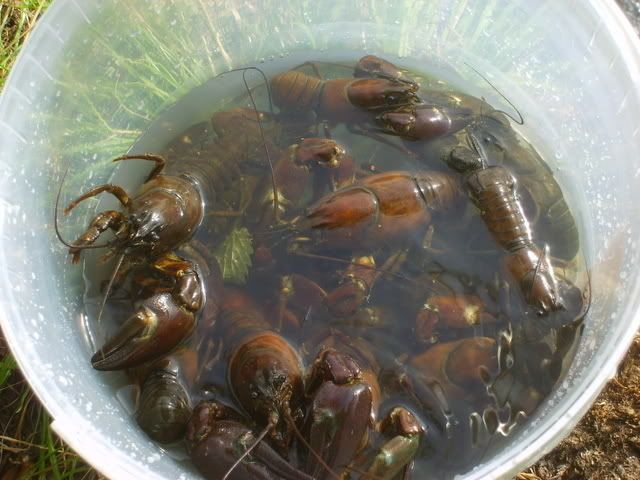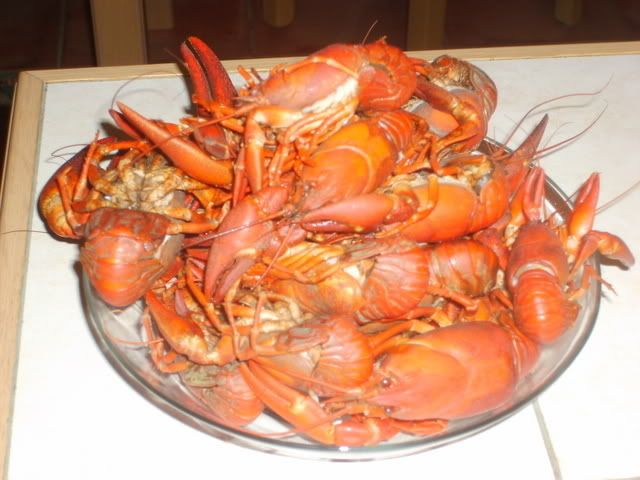i decided to make one of only natural materials without the use of string or wire. i have in the past made eel traps of hazel but i found it not pliable enough for the fine work needed,and as there are no willows around here i wondered what our ancestors would have used,and what was abundant around here at the source of the river Wyle in the shadow of the white sheet neolithic camp.i have from time to time found beutifull flint tools around here whilst out walking or shooting.
after some thaught i decided to try ,of all things brambles! i gathered a load of them,and i found that a good pair of welding gloves helped with the thorns.some of the bramble runners were nearly 20 feet long.
having gathered enough for the job ,i decided that a former,ie some thing to use to weave over ,would help in keeping the trap a good symetrical and even shape,ime sure a log would have done the trick,but i cheated and used a length of drainage pipe.having gathered the ends to gether it was just a matter of spreading the upright sticks evenly.in order to facilitate an easy job not having hands full of thorns i used a 4000 year old flint 'thumb scraper' to scrape the thorns off.it worked realy well.
next was to start the weave,which realy was easy once i had worked out that the brambles bent so much easier once they were twisted! heres a pic (yes i know its on its side!!):

and heres a pic of the body of the trap at 3/4 completion!

and here my trusty assistant jack hol;ds the completed body of the trap!


but how to get the eels to stay trapped eh? i hear you say! well next is to fabricate a funnel with a hole in it to sit in the entrance of the trap! this way the eels can enter but canot get out!heres a pic of the funnel:


next i needed a way to affix a peg or weightto keep the trap in place so a simple loop was woven into the body of the trapp and then 2 loops were added to facilitate keeping the cone in place!

once the loops were added the cone was fitted and a stick simply pushed through:

and here it is the completed eel trap! took about 6 hours to make in all and cost nothing at all and is i believe the answer to a problem of how to catch eels , crayfish and fish the same as our ancestors would have! hope you are inspired to have a go!

and heres the result of the last catch:


after some thaught i decided to try ,of all things brambles! i gathered a load of them,and i found that a good pair of welding gloves helped with the thorns.some of the bramble runners were nearly 20 feet long.
having gathered enough for the job ,i decided that a former,ie some thing to use to weave over ,would help in keeping the trap a good symetrical and even shape,ime sure a log would have done the trick,but i cheated and used a length of drainage pipe.having gathered the ends to gether it was just a matter of spreading the upright sticks evenly.in order to facilitate an easy job not having hands full of thorns i used a 4000 year old flint 'thumb scraper' to scrape the thorns off.it worked realy well.
next was to start the weave,which realy was easy once i had worked out that the brambles bent so much easier once they were twisted! heres a pic (yes i know its on its side!!):

and heres a pic of the body of the trap at 3/4 completion!

and here my trusty assistant jack hol;ds the completed body of the trap!


but how to get the eels to stay trapped eh? i hear you say! well next is to fabricate a funnel with a hole in it to sit in the entrance of the trap! this way the eels can enter but canot get out!heres a pic of the funnel:


next i needed a way to affix a peg or weightto keep the trap in place so a simple loop was woven into the body of the trapp and then 2 loops were added to facilitate keeping the cone in place!

once the loops were added the cone was fitted and a stick simply pushed through:

and here it is the completed eel trap! took about 6 hours to make in all and cost nothing at all and is i believe the answer to a problem of how to catch eels , crayfish and fish the same as our ancestors would have! hope you are inspired to have a go!

and heres the result of the last catch:


